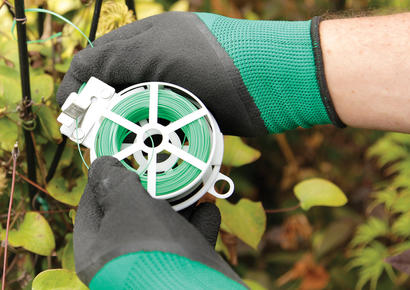
Seeds of Hope
October is one of my favourite times of year in the garden, looking back at summer, thinking about next year, and watching the scene turn from green to warm oranges and russets. Our gardens tend to relax and slow down, with few jobs that demand immediate attention. Cutting back, mulching, trimming hedges and weeding - much of this can be done almost any time in winter, so take your time and don’t feel rushed. Cooler days and the occasional frost bring a sharp freshness, warmed by autumn leaves, seedheads, berries and rose hips.
Have you ever bought a packet of seed, only to find none or very few of them germinated? Seeds lose their viability over time, meaning the percentage of seeds that germinate in a batch decreases as the seeds get older. While a date seed around 2,000 years old was once germinated, some seeds won’t last longer than a few months.
In the natural cycle of most plants, flowers that were pollinated earlier in the year have now become fruit or seed pods that ripen by late summer and autumn. Some seeds will germinate in autumn and hopefully survive winter for a head start in spring. Other seeds wait until spring, or even a few years until the conditions are just right, before bursting into life. By collecting seed as soon as it is ready to fall from the plant naturally, the seed is often the freshest and most fertile. Collect the seeds in small old tubs or bowls, or paper envelopes if you plan to store them.
The trick is to sow them fresh, as soon as you’ve collected them. Sowing in autumn may sound strange, but that’s what happens in nature, allowing cold and wet conditions to break the seed dormancy over time, known as stratification.Storing seeds over winter to sow in spring often results in them drying out too much, or failing to meet the stratification requirements.
The plastic boxes that supermarket mushrooms come in make perfect seed trays, but remember to cut a few holes in the bottom. Fill with a suitable compost, then sow the seeds. Put a fine layer of horticultural grit over the seeds to hold them in place. Label the tray, and then leave in a shallow tray of water to soak thoroughly for 20 minutes. Place the seed trays in a cold frame if you have one, a make-shift one is easy to build. After the first watering, the seed trays can now be watered from above using a fine rose on a hose or watering can. This agitates and strengthens the seedlings, making them stocky and sturdy. They’ll either germinate in autumn, and should be left in their trays until spring, or they’ll emerge in spring.
Some things may even take a few years. I’ve grown magnolias, peonies, roses, and all sorts of herbaceous perennials from seed. It’s a fantastic way to make new plants, and the excitement is unbeatable. Give it a go this autumn.


